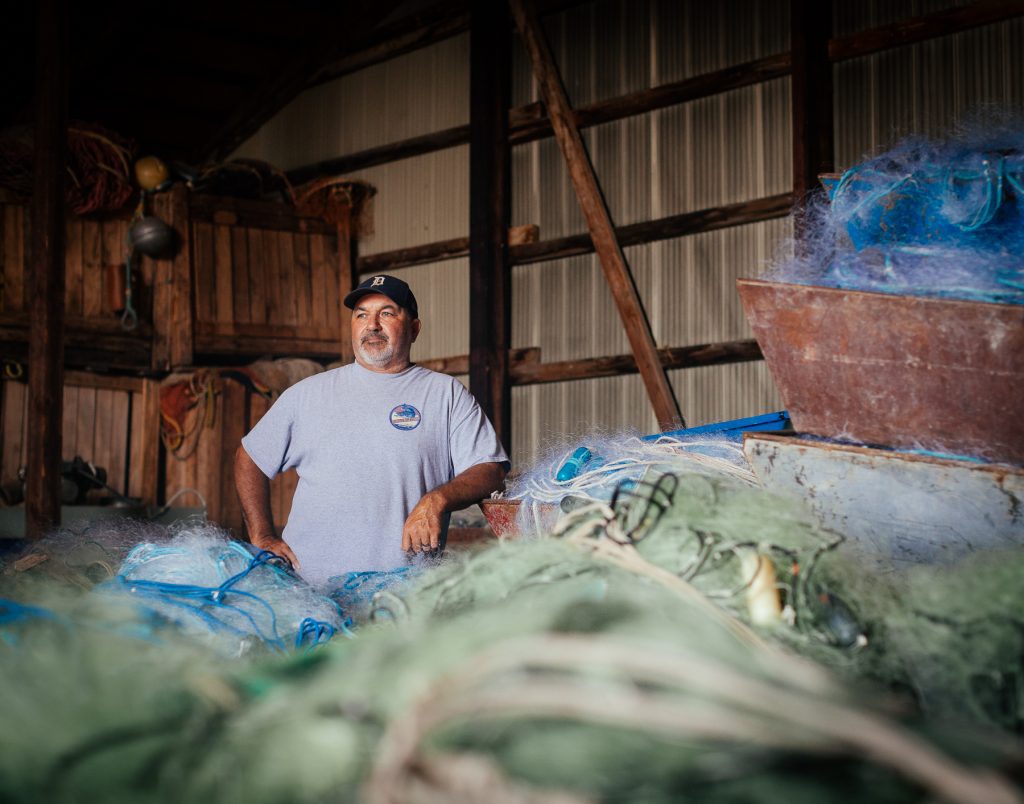Holly's first time visiting Lake Erie was at age 11, as her friend's family had a cottage in Port Dover, Ont. Holly kept returning as a teenager, and this continued into adulthood as a boater. Holly, with her two sons, trailered their boat all over Ontario. She laughs, remembering how "our axle broke on the highway heading back to Hamilton because of all the kilometres we were putting on the trailer!"
MEET THE PEOPLE
- Patricia – Pelee Island
- Heidi – Pigeon Bay
- Carrie Ann and Janne – Leamington
- Lisa – Leamington
- Mohamad – Leamington
- Sandra – Leamington
- Anthony – Kingsville
- Todd – Wheatley
- Ken – Shrewsbury
- Michelle – North Buxton
- Todd – Port Stanley
- Julia – Stratford
- Nandita – Waterloo
- Charlie – Guelph
- Mat & Melissa – Norfolk County
- John & Jan – Long Point
- Holly – St. Williams
- Gregary – Niagara
- Fred – Port Colborne
- Robin – Oshawa
Holly – St. Williams
Story and images by Colin Boyd Shafer

Holly grew up in Hamilton, but every summer she went up to a family cottage on Paudash Lake near Bancroft, Ont. to fish and boat. From an early age, Holly felt a deep connection to water.

When Holly returned to the family cottage as an adult, she noticed her grandfather's old aluminum boat —a relic from her childhood — and decided to paint it.
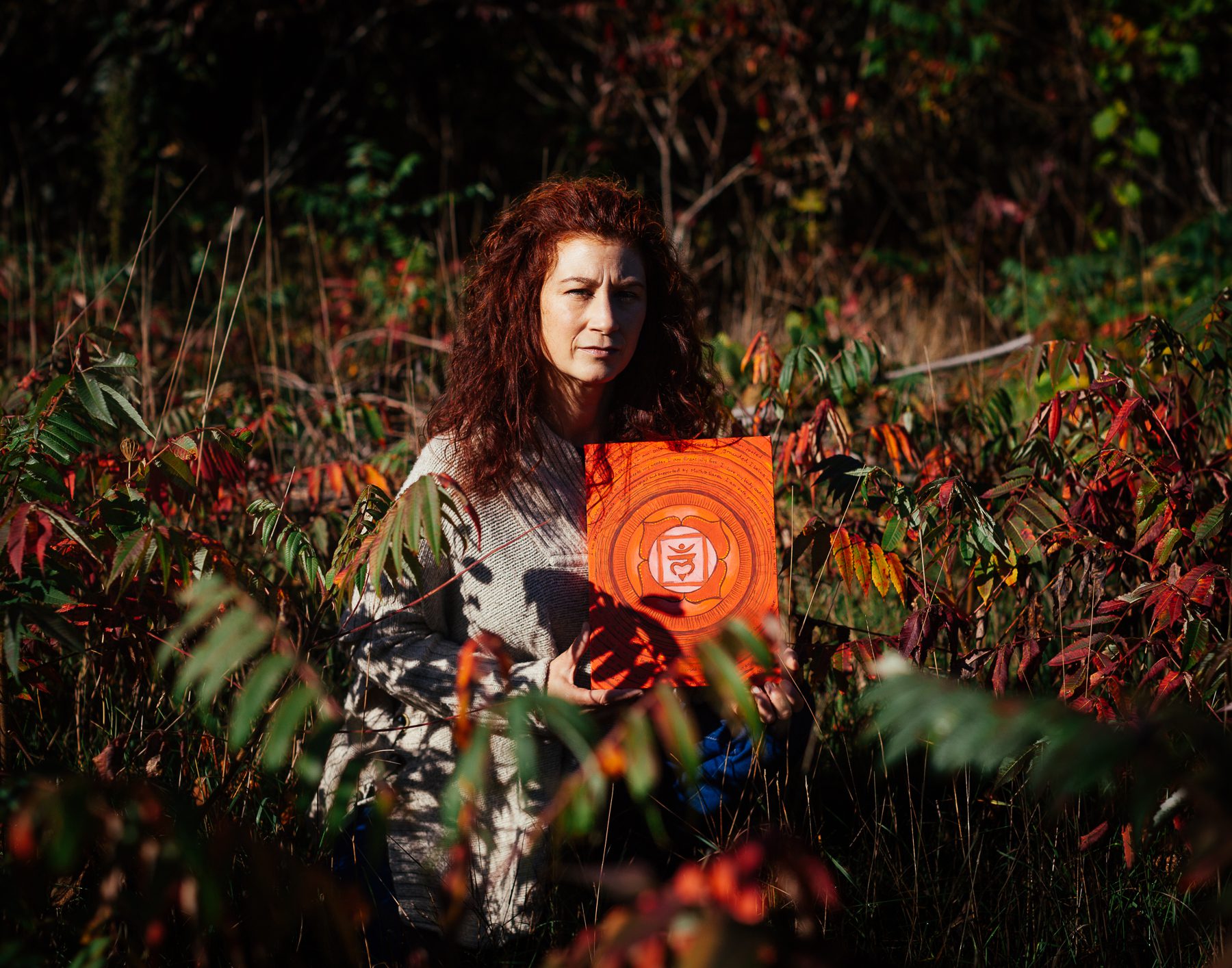
This particular piece of Holly’s art focuses on the root chakra. Holly explains: “I’m an adopted person, so I’ve spent my whole life seeking my roots, looking for a place where I feel like I belong. I feel like Lake Erie is where I belong and where I feel grounded and connected.”
Holly wanted to move the family away from the city to a place closer to Lake Erie, where they could boat easily. In 2015, they moved to Normandale, Ont. which Holly describes as “a teeny little quiet hamlet surrounded by forests, tobacco and corn fields.”
“This place sustains me; it nourishes me. This is home.”
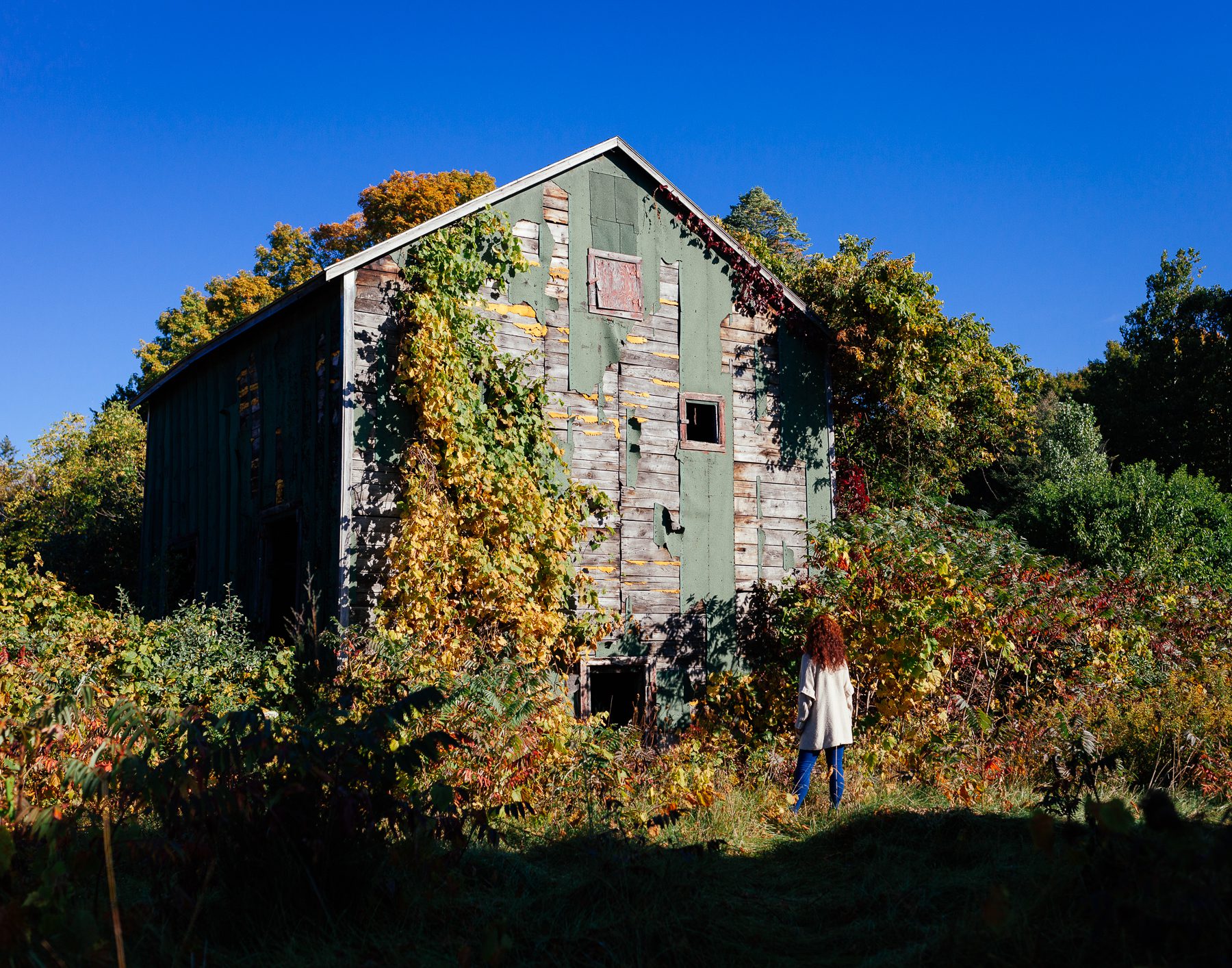
Since moving to Norfolk County, Holly has immersed herself in the area’s history. Holly’s friend Sarah’s family property used to be a tobacco farm. “These tobacco kilns represent the rich history of Norfolk County.”
The more Holly learned about Lake Erie, the more she realized the severe threats facing it, from toxic algae blooms to plastic pollution.
"When I was a kid coming to Port Dover, I remember tripping over tin cans and bedsprings in the water. Today, with our reliance on convenience, it is plastic bags and bottles."
Holly doesn't want Lake Erie to lose its beauty to plastic, and two experiences pushed Holly into taking action against pollution along the shores of Norfolk County.
After moving to the area, Holly became an active member of the local boating community —"a major cultural element of Norfolk County." Every year, the Pottahawk Boat Party takes place at the sandbar off Ryerson's Island, attracting hundreds of boaters. Holly saw firsthand how much garbage everyone left behind — from Mardi Gras beads to beer cans after attending the event.
The second experience was a family boating trip out to the lighthouse at the tip of the Long Point sand spit. Holly couldn’t believe all the garbage on the beach. She and her son quickly filled an entire garbage bag with litter. They felt a sense of accomplishment — the beach was clean. But that night, there was a storm. When they returned to that same beach the next day, it was once again covered in trash.
“It was like we had never cleaned up the beach. I realized how much junk and plastic is in the water and how we needed to do something about this."
In 2017, after these two experiences, Holly started “Cleaning up Norfolk,” an initiative focused on organizing regular cleanups along Lake Erie’s shore. In 2019, with the help of a local tour boat captain, they organized a group of volunteers to go to Ryerson’s Island and clean up after the Pottahawk Party.
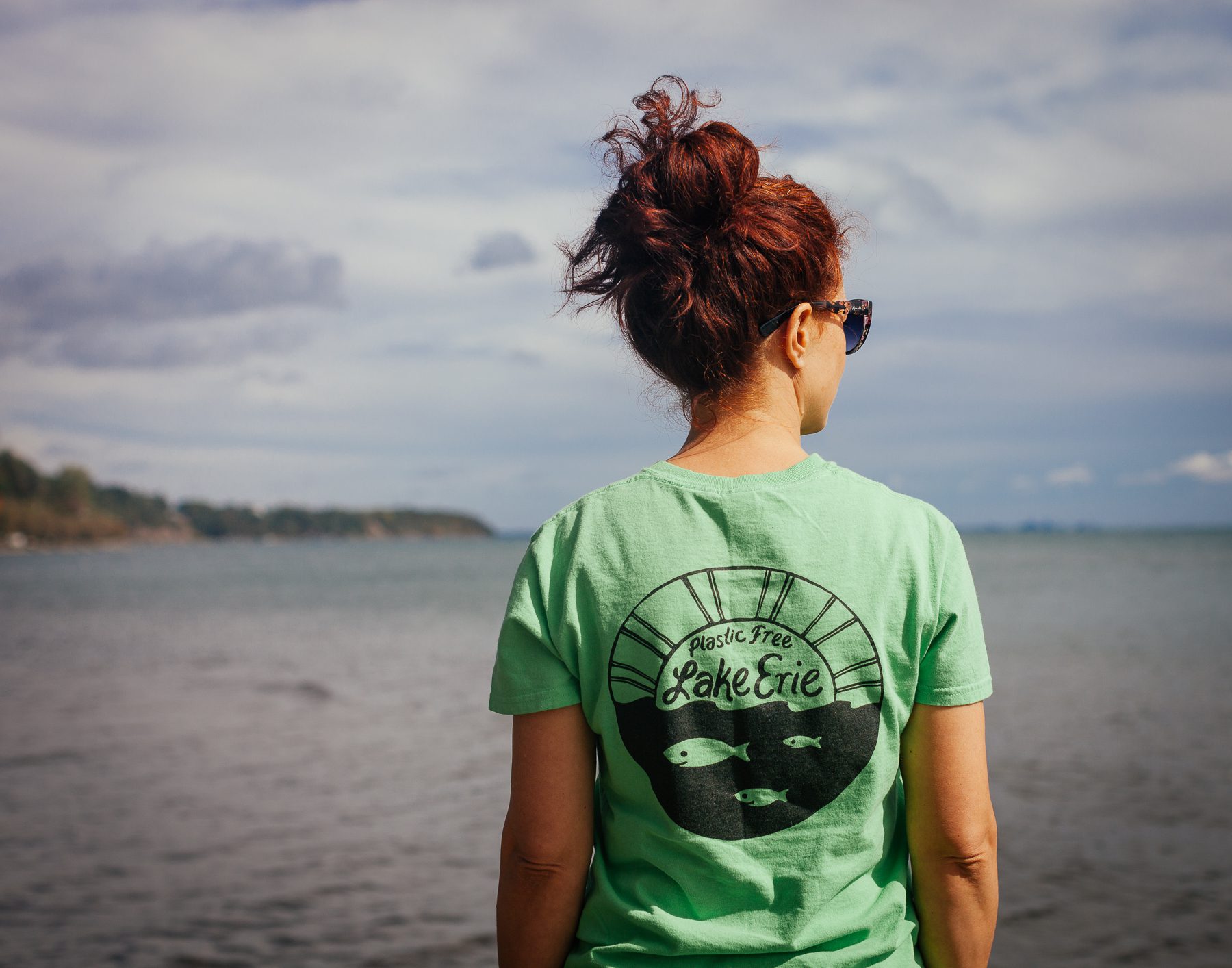
Holly looks out over Lake Erie from Turkey Point, one of the beaches she regularly cleans. The logo on her “Cleaning up Norfolk” shirt comes from designs submitted by teachers and students from Walsh Public School.
Holly has a degree in fine art and art history from McMaster University. One thing that always bothered her about art was the often overlooked use of toxic materials in making it.
“In art school, they teach you to buy a respirator and not to touch the paints too much. That’s scary!”
However, recently, Holly discovered a way to combine her love of nature, art, and sustainability.
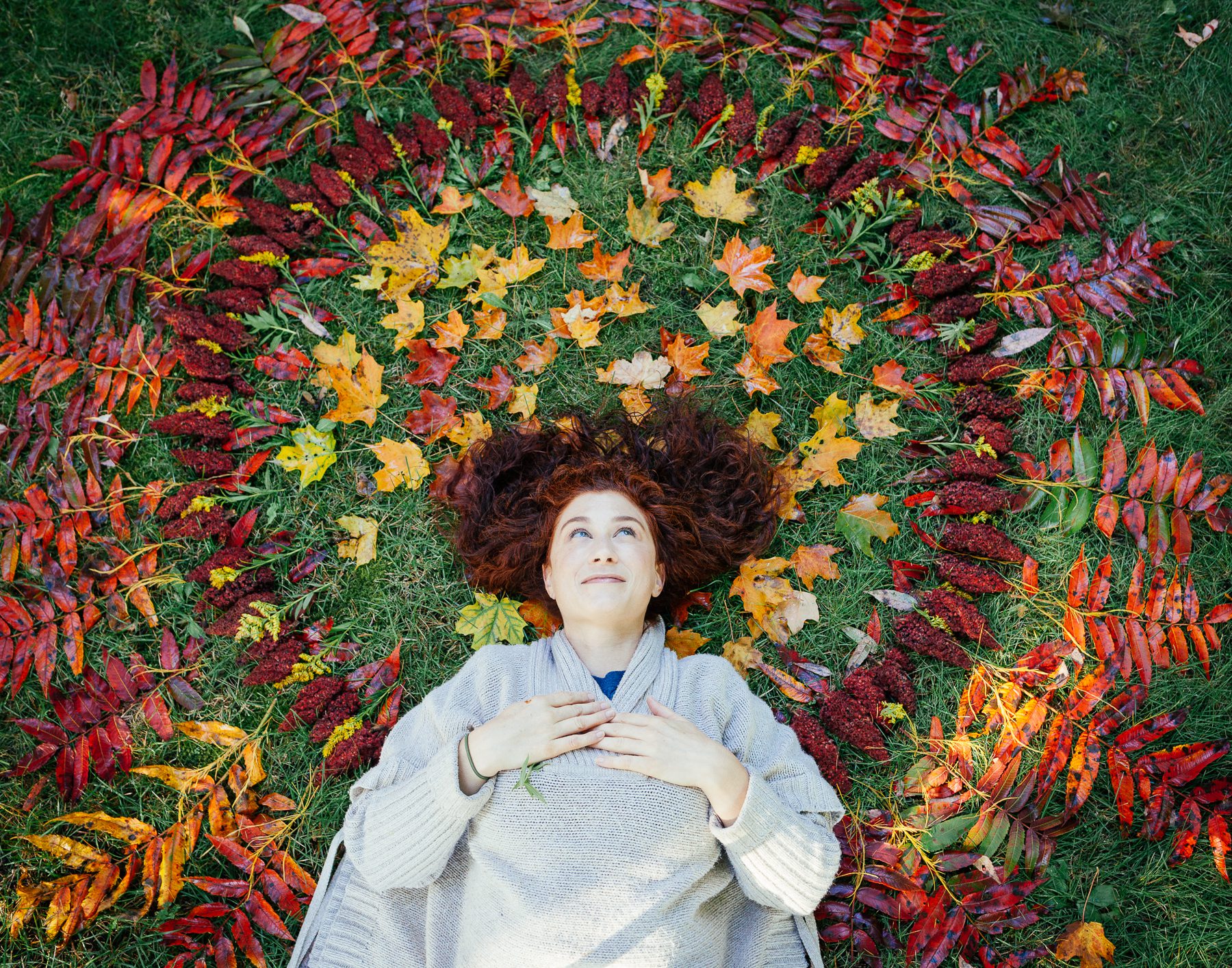
Holly lies in a mandala (a diagram, chart, or geometric pattern that represents the cosmos) she created out of items found on the forest floor.
Lake Erie and the woods in Norfolk County have been essential sources of inspiration for Holly’s art.
In 2019, she brought a small group of friends into Backus Woods to make mandalas out of natural materials found in the forest. Everyone involved found the experience enriching. Holly kept going out alone, as a sort of meditation. There she would find natural items, arrange them, photograph them, and finally “return them to the randomness of the forest floor.” These outings were the beginning of “Art in the Woods,” an initiative Holly has created to explore a way of making art with others without leaving a toxic footprint behind.
In 2019, “Great Art for Great Lakes” selected Holly and Suzanne Earls, a mosaic artist, to create a sturgeon out of plastic collected from the shores of Lake Erie. The Great Lakes population of lake sturgeon (Acipenser fulvescens) is currently listed as endangered according to the Endangered Species Act. Holly and her team of volunteers at “Cleaning up Norfolk” collected the plastic items that make up the sturgeon’s interior along the shoreline.

The sturgeon, called “Depths and Consequences,” is on display at the Port Dover Harbour Museum. In Lake Erie’s shape, the interior is made of bits of collected plastics by “Cleaning up Norfolk,” and the outside is composed of recycled glass tiles. You can see the Mardi Gras beads Holly collected from Ryerson’s Island after Pottawak.

With help from her friends, Holly continues to save “artistically valuable” pieces of plastic, like these toys, that she finds on the beaches of Norfolk County.
The last year has brought a lot of challenges and changes in Holly’s personal life. Her self-care involves a lot of time in nature, like walking through the woods or swimming in the lake.

Holly has been practicing yoga and meditation for around 25 years. She finds Backus Woods, a Carolinian forest in Norfolk County, to be an excellent place to continue these activities.
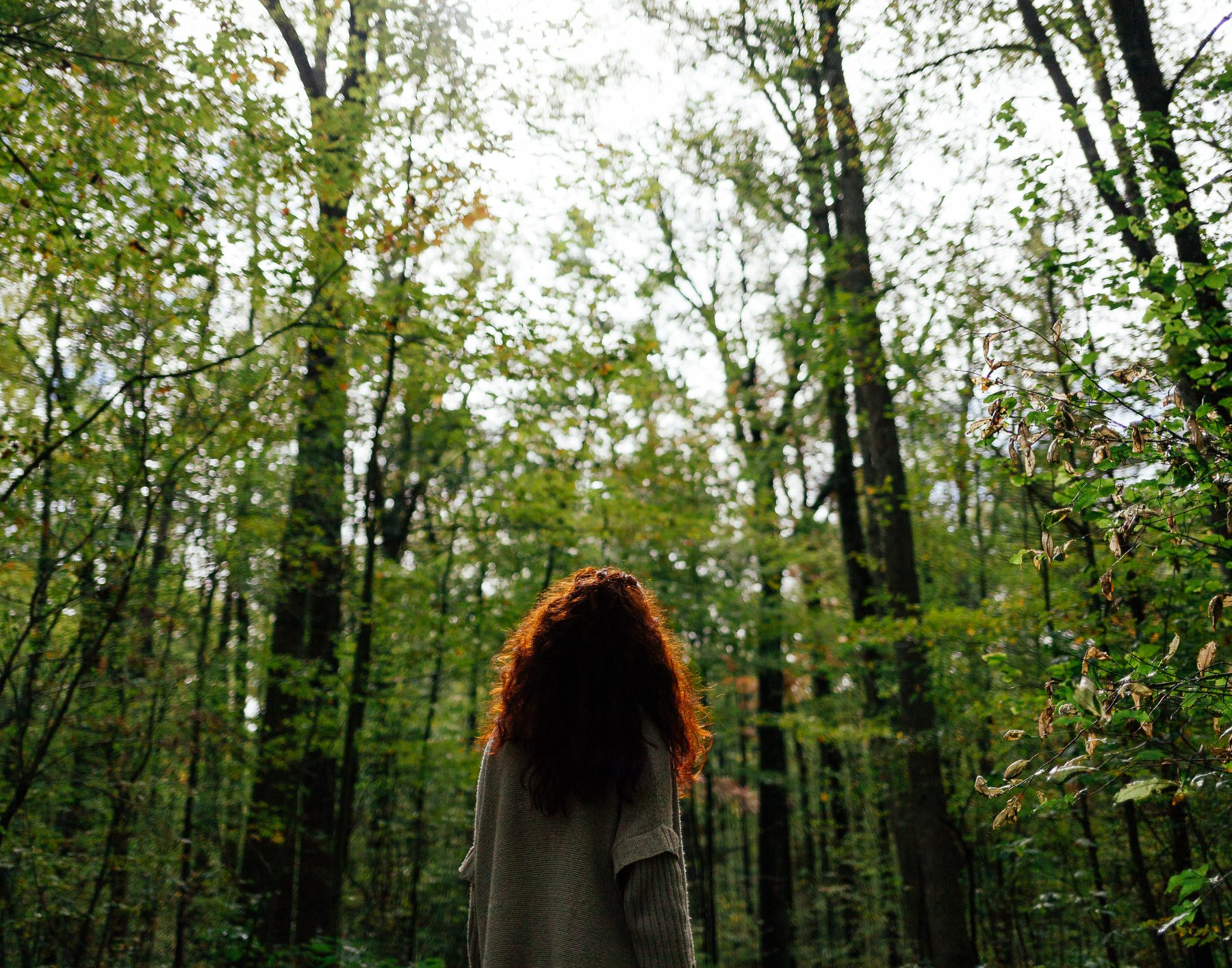
Holly believes in the Japanese concept of "forest bathing" ( shinrin-yoku) and the positive effects immersing the senses in nature can have on one's health. "Humans have evolved to belong in a forest or by large bodies of water."
For many years, Holly has been interested in herbal medicine. Making tinctures from the plants around her is one way that Holly tries to take charge of her health. Since moving to Norfolk County, Holly has enjoyed learning about the different local plants that have medicinal properties.
"There is a lot of medicine available for free all around you. You just need to know what you are looking for, how to ethically harvest it, and prepare it."
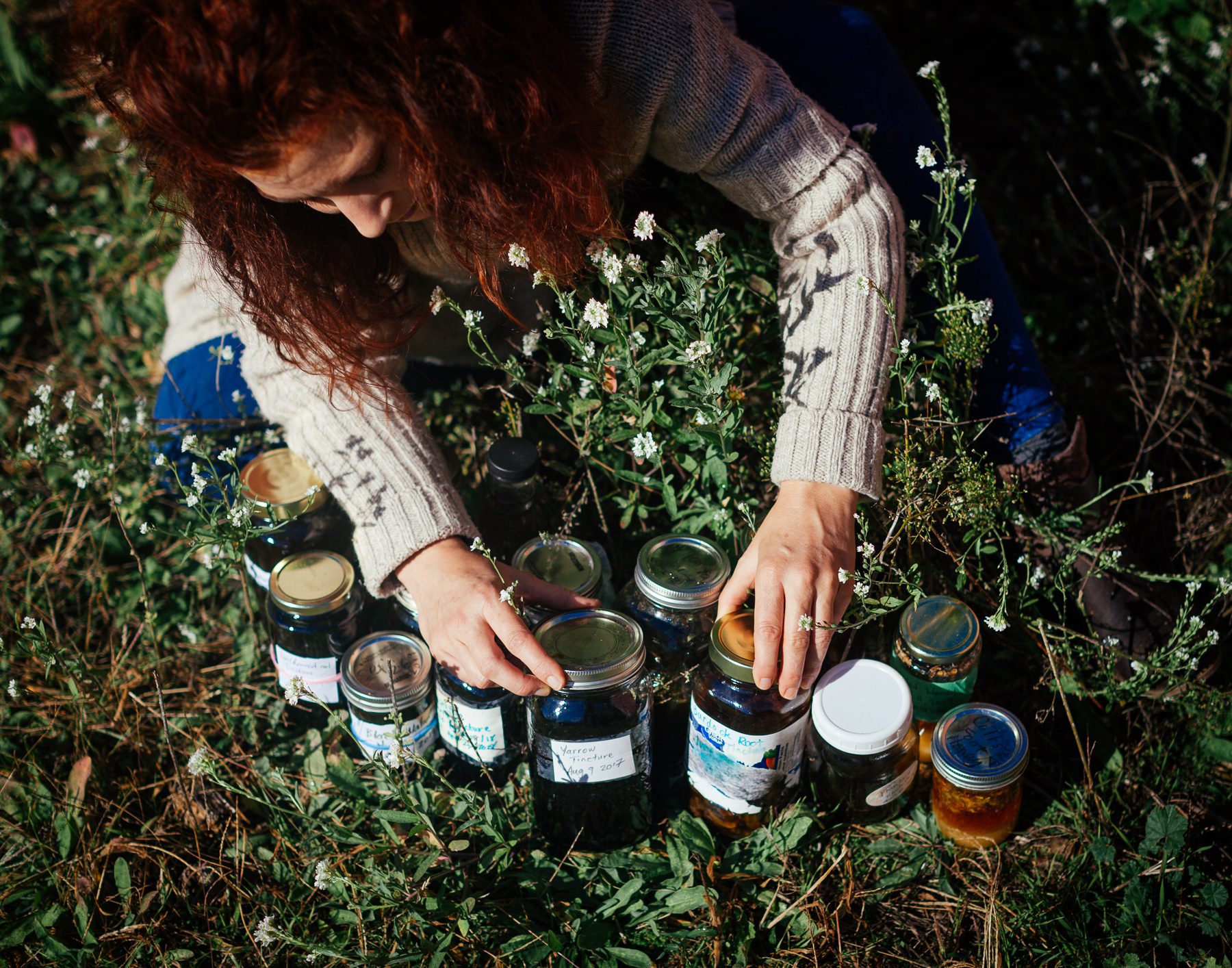

(left) A collection of tinctures, like yarrow and chaste tree, that Holly has made over the years. (right) Holly holds up motherwort, an herb that grows all over Norfolk County and is used to soothe anxiety, heart palpitations, and nervousness. Her tincture made of motherwort helped Holly get through recent panic attacks.

Holly loves Norfolk tap water and makes sure to bring her bottle of it wherever she travels outside of the county. “Every time I have a glass of water here, I feel connected to Lake Erie. The lake is literally my body.”
After many recent changes in her personal life, Holly is figuring out what is next. Whatever path she takes, she knows it will be by Lake Erie.

“The lake is awe-inspiring. The water has so much power behind it, and it demands to be respected.”
Holly is interested in the idea of a “blue mind,” a concept coined by marine biologist Dr. Wallace J. Nichols on the remarkable effects of water in all of its shapes and forms on our health.
“When you stand there and look out over the vast blue, and it calms and resets you. It is healthy.”
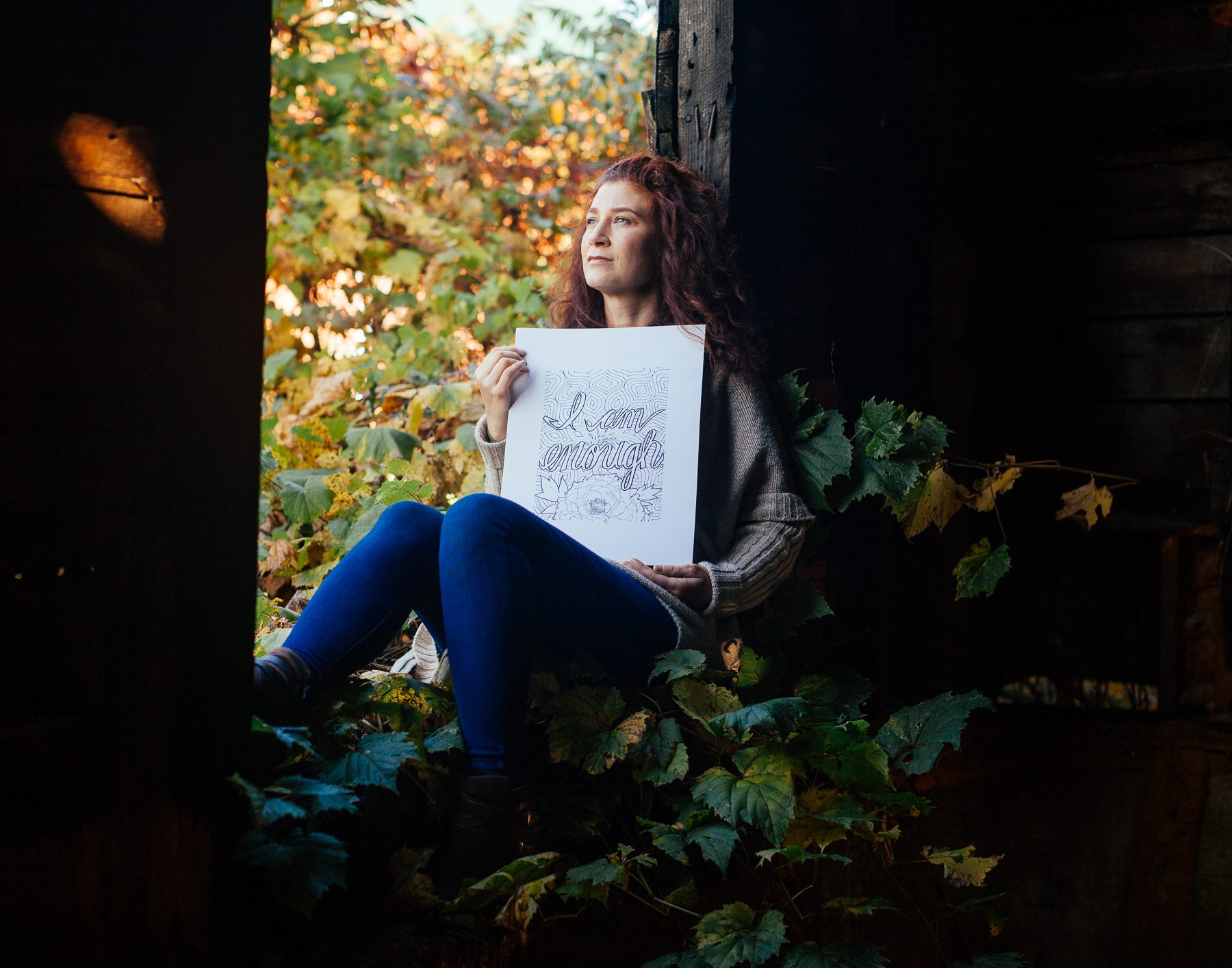
Holly sits in an old tobacco kiln holding a typography piece she created. “I aim to share my healing experiences with others. I’m going to get this message out. You can heal yourself.”
Holly wants to see Lake Erie’s beauty continue.
“I have two teenage sons, and I want them to be able to share the beauty of nature with their children. I hope they can still go fishing and enjoy the fish with their families. I want them to feel like it is safe to swim in the lake.”
Read More
STORIES FROM THE LAKE
Carrie Ann and Janne – Leamington
Take Action
Lake Erie and the millions of people who rely on it for their drinking water, local jobs, and so much more need your help.
The health of Lake Erie continues to decline. Action is needed more than ever to restore its health for current and future generations.
You can make a difference. Here’s how you can help protect the lake and support the people who are closely connected to it.
EXHIBITION BY: documentary photographer COLIN BOYD SHAFER in collaboration with ENVIRONMENTAL DEFENCE




